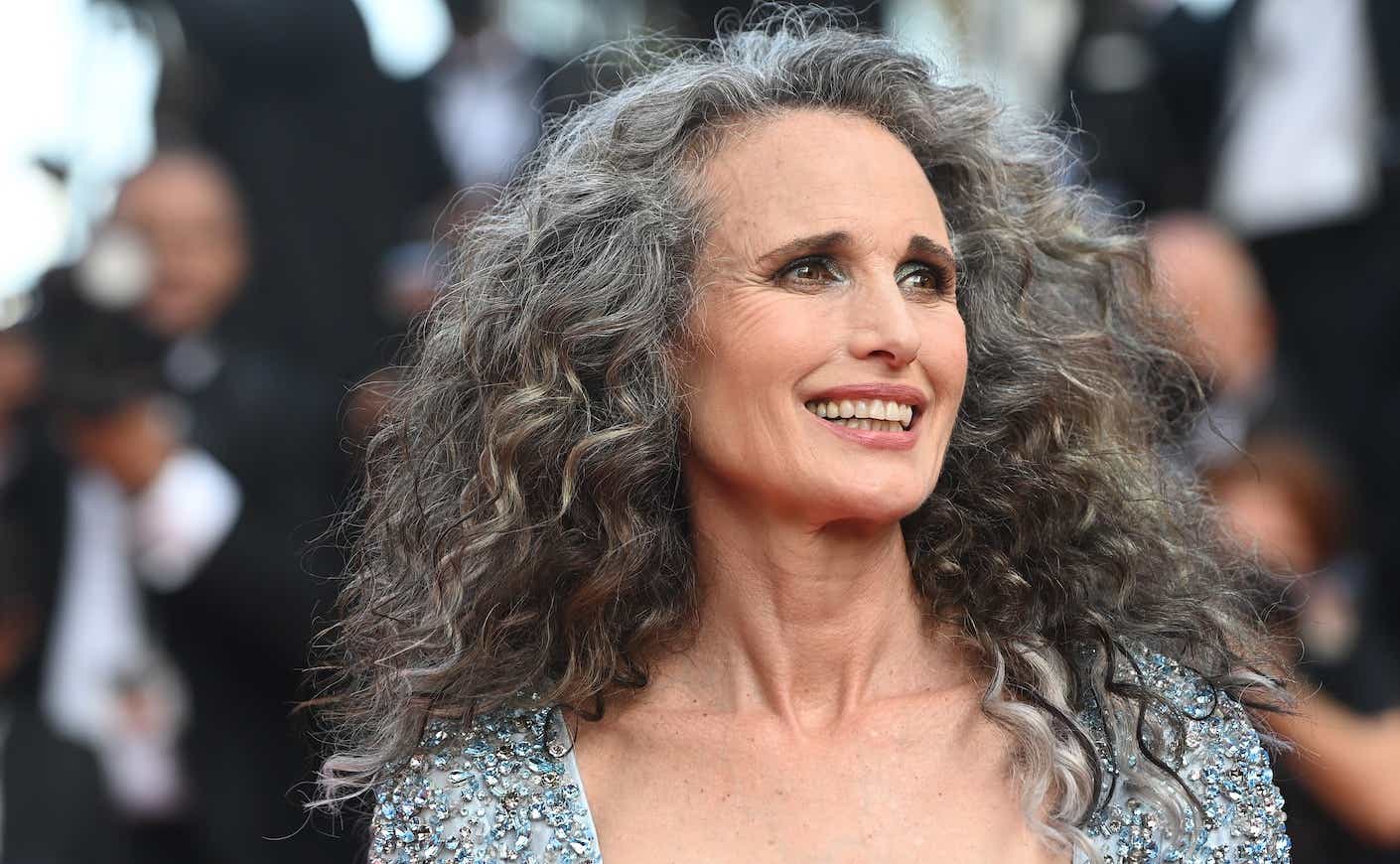If you haven’t listened to Katie’s intimate chat with movie star Andie MacDowell, pause whatever podcast you’ve got on and tune in ASAP. In their heartfelt discussion, the pair talk about MacDowell’s new movie, My Happy Ending — but they also delve into dating later in life, friendship, and what it’s like to be a middle-aged sex symbol. One transition that helped MacDowell step into this status of an older icon was going gray. The longtime brunette walked Katie through the decision to cancel her root touch-up appointments and embrace her silvery locks.
Initially, MacDowell was scared of experimenting with her natural hair because she thought it would threaten her longtime beauty gig: “I work for L’Oreal and I love that job. That’s my marriage — I’ve been with them for 36 years. I was terrified because I want to keep working for them.”
She ended up taking the leap. “I thought that it would suit me. I really did. I thought it would look good on my face. And when I started growing it out during Covid, I thought, I was right. It looks good on me.”
It turns out that MacDowell didn’t need to fear losing L’Oreal: “The overall feeling was loving and accepting.”
And after she’d put professional anxiety to rest, she adored how the silvery tones complimented the rest of her face more than her old brunette locks: “As it was growing, [the color of] my eyes popped. I liked the way my skin looked. I felt more powerful and I felt more genuine. I felt more myself. Just more me. This is who I am.”
Looks are only part of the equation, though; MacDowell explains to Katie that going gray helped her meditate on the gift of aging. In MacDowell’s case, she embraced the opportunity to honor her mother, who never had the chance to go gray: “My mother died when she was 53 and I was 23. I never got to see her transition.”
That said, many women hide signs of aging so that they won’t experience discrimination in the workplace. Since MacDowell has always been famous for her enviably voluminous curls, Katie had to point out that MacDowell’s career hasn’t slowed down — even though proof of women aging is traditionally taboo.
“It looks like — from the magazine covers to some of the roles you’re getting — people are embracing [your hair],” Katie says. “How do you account for that?”
MacDowell says the key to her confidence is listening to the young fans who love it when women proudly show signs of aging: “I think the younger generation is tired of the status quo. The younger generations really perceive women as being much more powerful than we perceive ourselves. Because we grew up in a generation when we were taught to disempower ourselves, and they don’t want that.” This is an instance when “out with the old and in with the new” is actually beneficial to people of all ages.
MacDowell also assures Katie that even when she gets flack for her hair, it’s so rare in the face of the positive feedback that she can easily rise above the criticism. “It makes me laugh when someone says [my hair] makes me look older because I feel so sorry for them. I really do.”
But if you’re dye-hard (sorry) about maintaining your hair color, there’s no pressure to throw out your Clairol. Although MacDowell reminds us that even if gray hair isn’t our journey, we shouldn’t put down others for aging.
“I don’t judge anybody for the choices that they make. I don’t think we have time to pass judgment on anyone. I think we need to be more loving. The more open your heart is, the softer and more gentle you are on other people, the bigger break you give yourself as well.”












